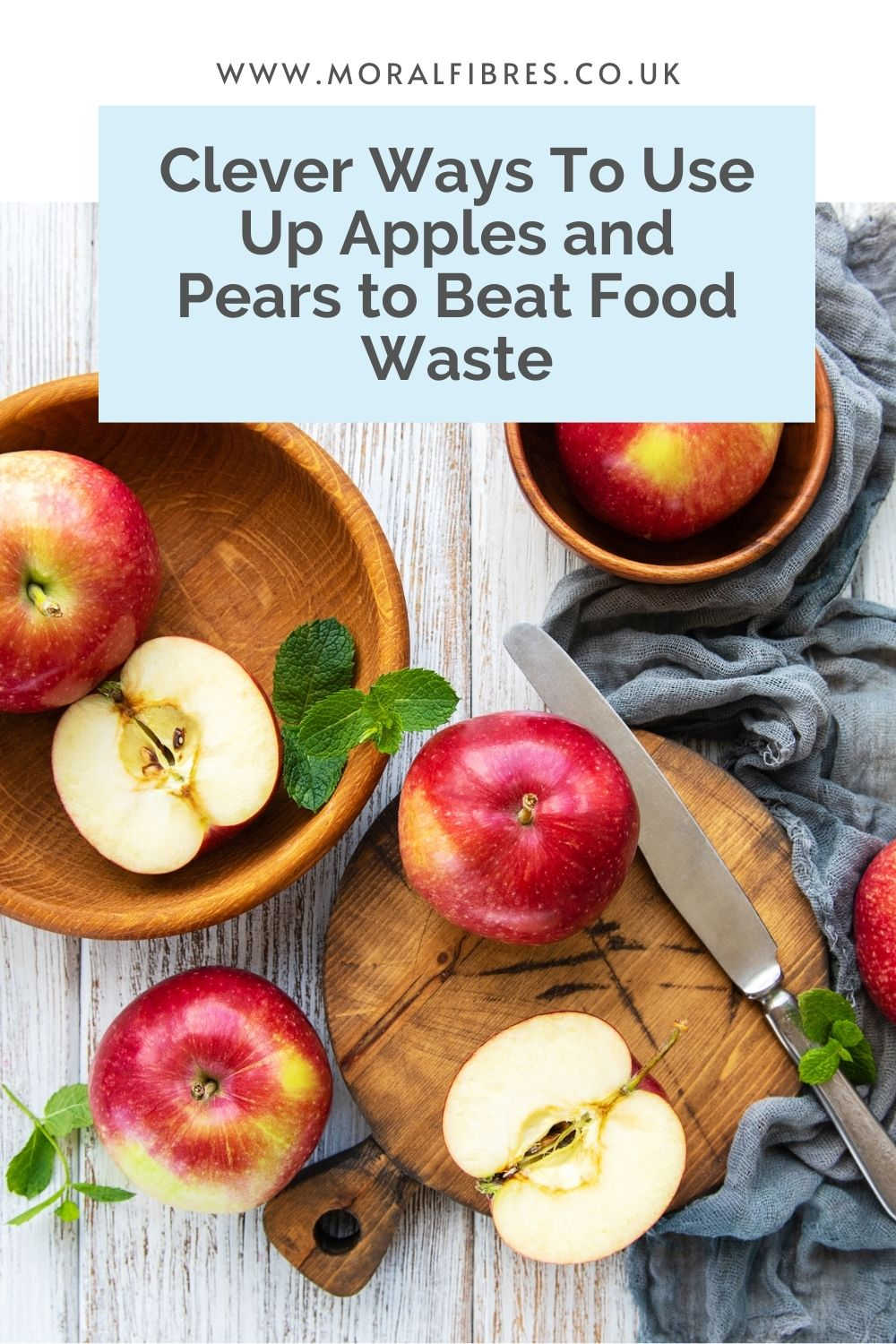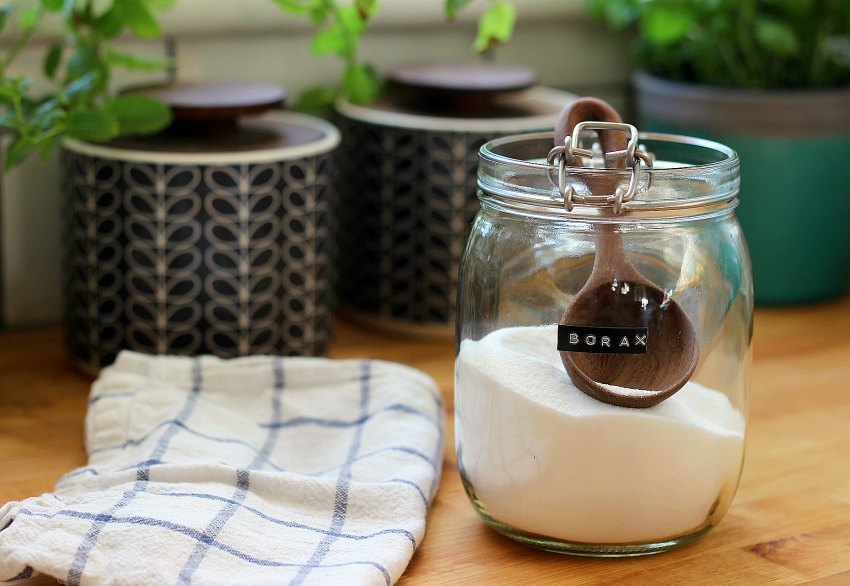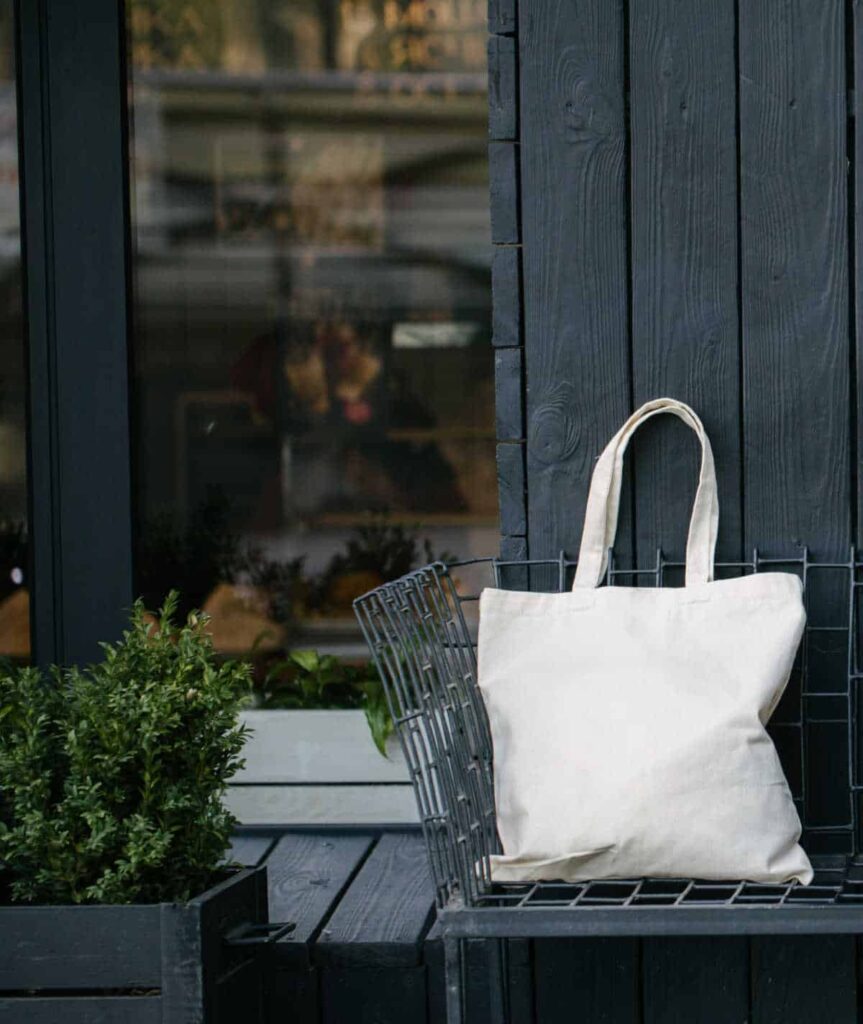How To Use Up Apples and Pears To Beat Food Waste
To support the running costs of Moral Fibres, this post may contain affiliate links. This means Moral Fibres may earn a small commission, at no extra cost to readers, on items purchased through these links.
Do you have a glut of apples or pears? Or a bowl of fruit going to waste? Here are some clever ideas to use up apples and pears – from the peel to the flesh and even the cores.
I’m really big on reducing food waste, so I was really excited to learn about the new book, The Complete Book of Vegan Compleating: An A-Z of Zero-Waste Eating for the Mindful Vegan, by Ellen Tout.
Here Ellen has lovingly and concisely put together the ultimate guide to zero-waste and sustainable cookery. As such, Ellen’s book shows you how to make use of every leftover, scrap, and glut to make vegan food in delicious, nutritious, and inspiring ways.
Ellen has kindly let me share an excerpt from this book, on how to use up every last bit of apples and pears to help reduce your food waste.
Did you know that, as well as their sweet flesh, apple and pear peels, and even their cores, can be used to create sauces, dressings, and confectionery in your kitchen? Read on to learn more!
How To Make Apples & Pears Last
Apples and pears are in season from September until February. They should be stored in the fridge. However, pears are often best purchased when firm or underripe so that they can ripen at room temperature before being stored in the fridge. You could also chop and freeze apples and pears to later add to crumbles.
If you grow or forage a large number of apples, then these can be stored somewhere cool on an apple rack for a few months. You can make your own by wrapping each fruit in newspaper and storing them in a cardboard box with a sheet of paper between each layer, making sure the fruits don’t touch. Check regularly to remove any bad apples and you’ll be enjoying your harvest well into the winter.
Nutritional Benefits
Apples are rich in antioxidants and are a great source of fibre, especially in the skin. They are also a source of vitamins A, C, K, and B7. Pears are also a good source of fibre, as well as potassium, phosphorus, vitamin K, and calcium.
Apples and pears were named as part of the “dirty dozen” in recent research. This means that unfortunately, they are high on the list of produce with multiple pesticide residues, so it’s especially worth buying organic or growing your own, and washing the fruit well.
How To Use Up All Parts Of The Fruit

Flesh
We tend to eat apples and pears raw and as a quick snack, but try adding chopped raw apple or apple peels to a coleslaw or beet slaw. Slightly old fruits are ideal for stewing or adding to skin-on fruit crumbles, pies, or tarts. If you want to preserve the flesh then try some of the following ideas.
Dried apples or pears
Cut the fruit into slices, as thinly as possible, leaving the skin on. Most people core the fruit before doing this, but you can leave the centre intact, only removing seeds or any especially tough parts. Spread evenly on a baking tray and cook at 100°C/200°F/gas mark ½ for 2–3 hours, until fully dried. Eat as a snack or topping for smoothie bowls, granola, and desserts. Follow this same process with different fruits, like apricots and kiwi, and ideally bake one big batch of dried fruits at once. Store in a jar for up to a month.
Apple sauce
As well as being a condiment, apple sauce is a brilliant replacement for eggs in vegan baking. To make, chop two medium apples into small chunks. There’s no real need to remove the peels, but if you are going to use this as an egg replacement you might prefer to – or just use a hand blender to purée the peels into the finished sauce. Add the apples to a saucepan over a medium heat with ¼ teaspoon cinnamon, or more to taste. Once it simmers, reduce the heat and cook for around 20 minutes. Mix in one teaspoon of lemon juice and remove from the heat. Use a potato masher or hand blender to purée the sauce, depending on your preference and intended use. Store in a jar in the fridge for a week or freeze.
Chutneys and ferments
Chutneys are a great way to make use of a large amount of apples and pears. I like to forage these, as well as plums, and give the chutneys away as gifts.
Ways to Use Apple Peel
Many dishes, like crumbles or sweet pies, taste great with the apple or pear peels intact. However, others, such as chutneys, do benefit from peeling. The peels are a good source of fibre and well worth saving.
These recipes work best fresh, but I also have a tub in our freezer, where we store leftover apple and pear peels and cores. Once you collect enough, these are perfect for making homemade vinegar or syrup. You could also add your chopped peels to homemade granola before it goes in the oven.
Apple or pear peel tea
Steep your peels in boiling water, or simmer on the stove, and add ground cinnamon and brown sugar to taste. You could also use a little sweetener in place of sugar, or add some lemon juice. Enjoy warm or cooled in the fridge with ice.
Sweet apple or pear peel crisps
These are best made when the peels are fresh, so the flavour is absorbed. They are also great as a snack or in granola. To make, in a bowl, mix 80g/2¾oz peels with one teaspoon sugar and ¼ teaspoon ground cinnamon. Make sure the peels are well coated. Spread evenly on a baking tray and cook at 150°C/300°F/gas mark 2 for 20–30 minutes, checking regularly. The finished peels should be crispy but not burned.
Infuse spirits
Apple and pear peels can be used to infuse spirits. You can experiment with combinations like apple and rhubarb gin or pear vodka.
What About Apple Cores?

Apple seeds are poisonous in large quantities. However, you can carefully munch your apple or pear right up to the very centre, avoiding seeds, and leaving just the overly fibrous parts behind. Store whole cores in the freezer with peels until you collect enough to make vinegar or syrup.
Apple Cider Or Perry Vinegar
Cider vinegar, made from apples, or perry vinegar, made from pears, is easy to make using leftover peels and cores. You just need a little patience!
Place around ten apple or pear cores in a clean (but not soapy) jar, as well as any peels, and add one tablespoon of sugar. Add enough water to cover the fruit and stir well. It’s important that every time you stir you use a clean utensil to avoid any contamination.
Next, place a piece of muslin cloth/cheesecloth over the top of the jar and secure it using a rubber band. Place on a shelf out of direct sunlight and stir every day. After a few weeks, it will taste a little like cider/perry. Frothy white bubbles should form on the surface; this is a good sign. But any mould means the batch should be discarded.
After around a month, strain out and compost the apple or pear pieces. Cover the jar and leave for another month, after which time it should taste more vinegar-like and is ready to bottle and use. Store this in the fridge for up to a year. It may need to be “burped” every now and then to release any air so keep an eye out for bubbles. If you want to speed up this process, add a “mother” from a shop-bought raw, unfiltered, and unpasteurized cider/perry vinegar, or from a batch made previously.
How To Use Up Whole Apples
If you are looking for a way to use up whole apples, then try these baked cinnamon apples. This traditional pudding lets you savour the apple’s natural sweetness and flavour. It takes hardly any time to make and uses kitchen staples. Delicious served warm with plant-based vanilla ice cream.
Prep 5 minutes. Cooking 30 mins
You Will Need
- One large apple
- Three teaspoons of sultanas/golden raisins
- Two tablespoons of dark brown sugar
- ¼ teaspoon ground cinnamon
- ½ teaspoon finely diced unpeeled root ginger
- ½ teaspoon maple, agave, or golden syrup to bind
- A small knob of plant butter
- Plant-based vanilla ice cream, to serve
Method
- Preheat the oven to 180°C / 350°F/ gas mark 4.
- Remove the core from your apple using an apple corer. If possible, do this cautiously so that the base of the apple remains intact. Alternatively, carefully use a knife to remove the core. If there is any apple flesh attached to the removed core, retain and dice this into the filling. Save the core for making apple cider vinegar or compost it.
- In a bowl, mix the sugar, sultanas, cinnamon, root ginger and sweetener until combined. You can also add any offcut apple flesh or diced apple or pear peel from making other dishes. Stuff this filling into the centre of the apple, using your fingers to compress it down and ensure it is tightly packed.
- Place the apple in an ovenproof dish with a very shallow layer of water.
- If you have any other apple or pear peels or flesh to use up, you can chop and add these to the dish around the apple.
- Top the apple with the butter.
- Bake in the preheated oven for 25–30 minutes until softened.
- Serve warm with ice cream. Drizzle over any syrup or fruit that has collected in the dish.
Excerpt from The Complete Book of Vegan Compleating: An A-Z of Zero-Waste Eating for the Mindful Vegan, by Ellen Tout, published by Watkins Media. Available to purchase now at all good bookshops and online.
Found this post useful? Please consider buying me a virtual coffee to help support the site’s running costs.




